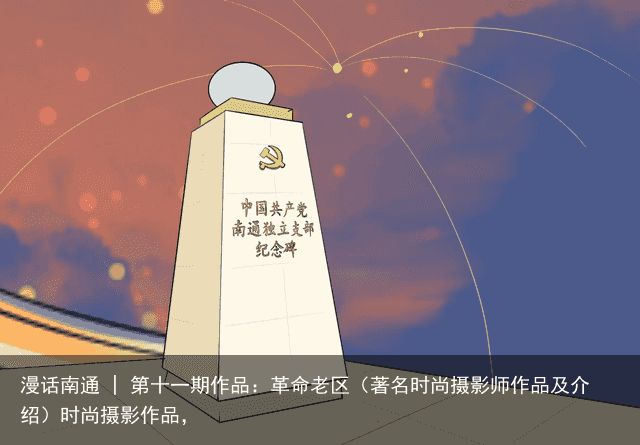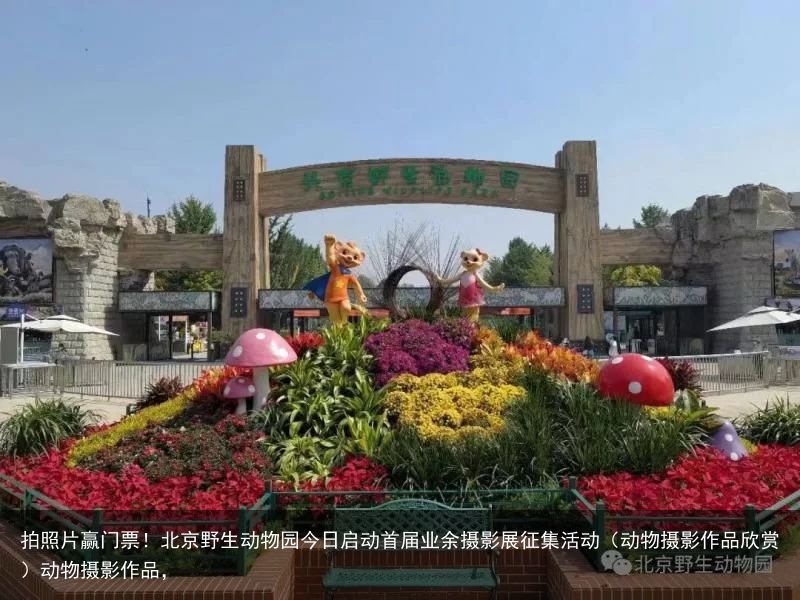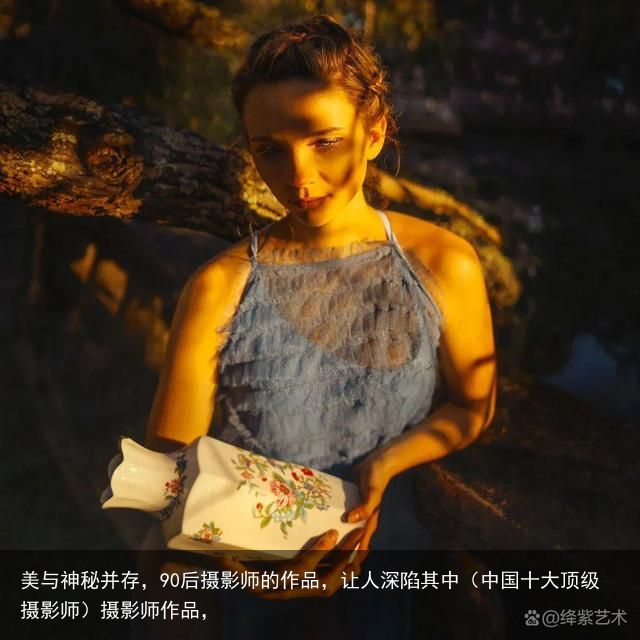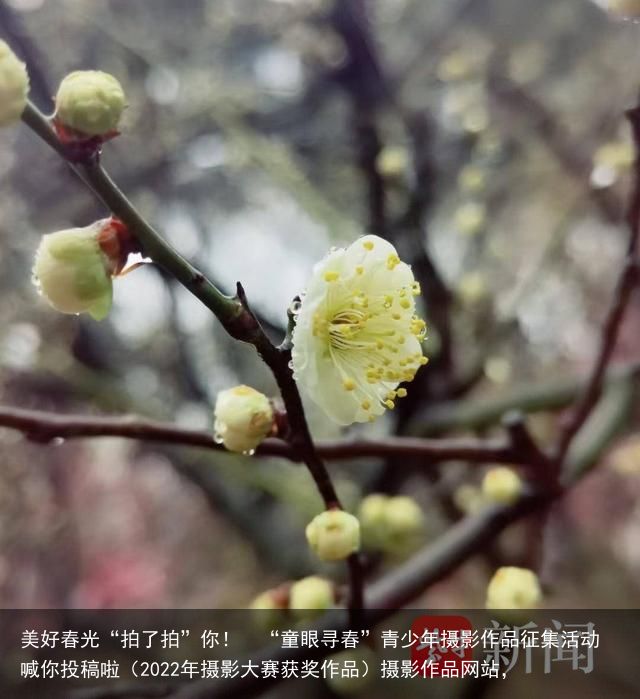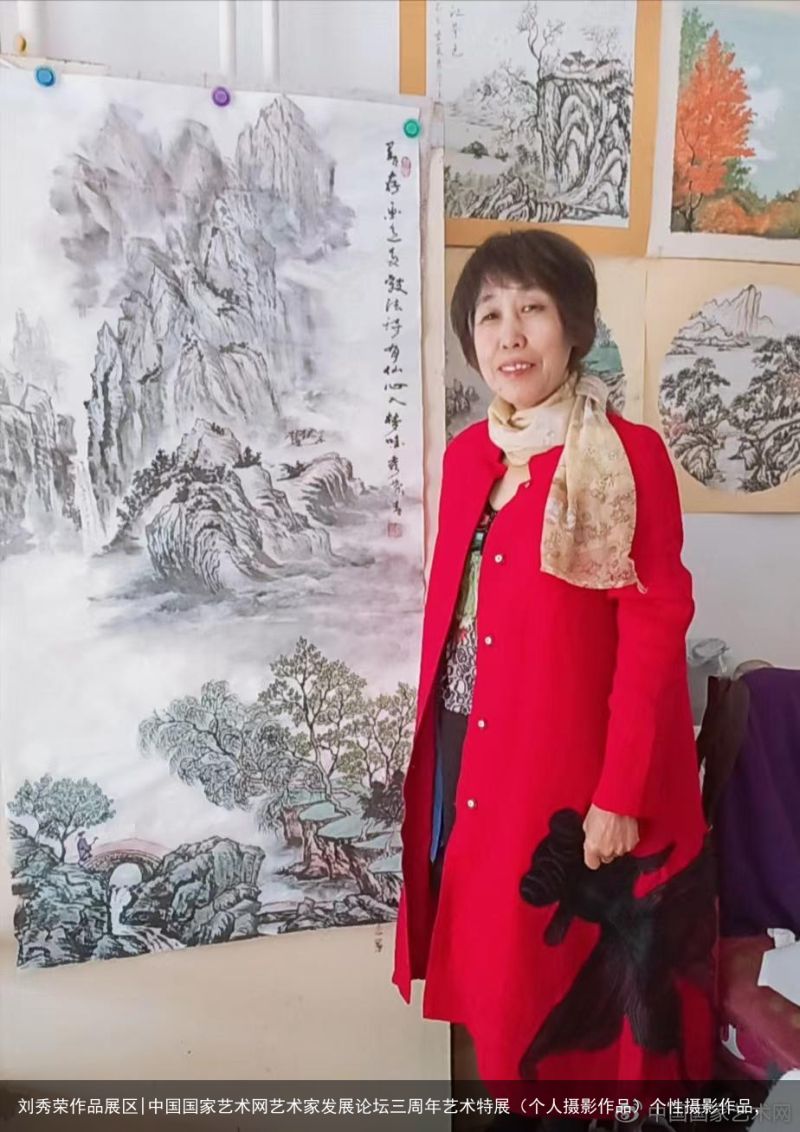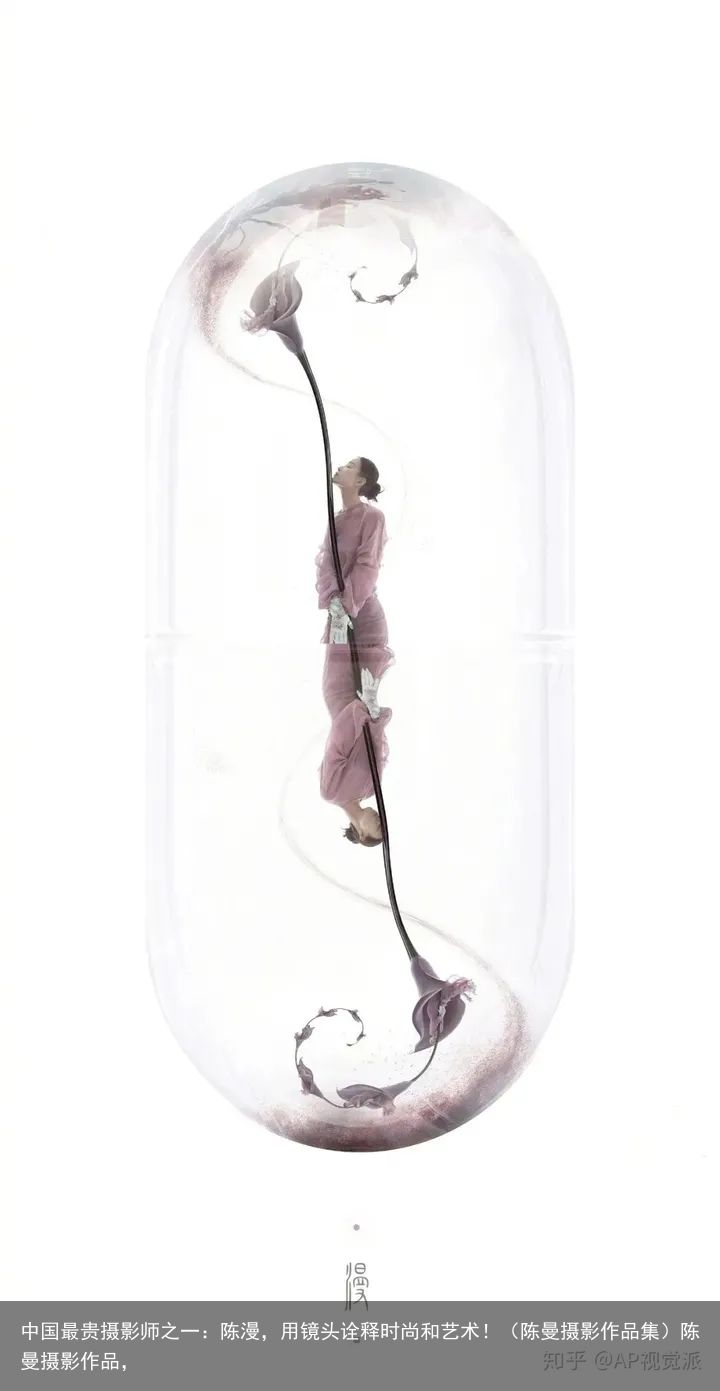这40张照片,让我惊叹人文摄影竟能有如此精美的体现(人文摄影作品简介)人文摄影作品赏析,
「 何为人文 」
早前一篇推文提到:人文一词最早出现在《易经》中贲卦的彖辞:刚柔交错,天文也。文明以止,人文也。观乎天文以察时变;观乎人文以化成天下。宋程颐《伊川易传》卷二释作:天文,天之理也;人文,人之道也。天文,谓日月星辰之错列,寒暑阴阳之代变,观其运行,以察四时之速改也。人文,人理之伦序,观人文以教化天下,天下成其礼俗,乃圣人用贲之道也。人文原来是指人的各种传统品质与属性。
古希腊早期哲学家把人们对宇宙万物的关怀称之为“哲学”,他们奉献自己毕生的生命与智慧去探寻世界的真、人性的善、生命的美,哲学家们放眼于人类对大自然力量的崇敬和人类自身生存状况的觉醒,在追求事物本质的过程中更深刻的体现着对命运的追问、对智慧的向往以及对人性的多角度解读,进而发展为一门系统思想:人文精神。某种程度上说,人文精神是人类存在的意义与生命价值的最高体现,它以人作为指向和尺度,引导人以求知、求善、求美、追求自由为旨趣,在自由创造和自我完善过程中逐步实现生命的真正意义。
近代之后,关于人文更多则形成为一种动态的表象。《辞海》中这样写道:人文指人类社会的各种文化现象的总和,文化是人类或者一个民族、一个人群共同具有的符号、价值观及其规范。
对于人文摄影,某种程度上我们可以理解为:以记录、表现人类社会各种文化现象为主的摄影类别,纪实摄影与街头摄影都应归于其中。要将人文精神最大化的表现出来,通常要求记录者同样具有一定的人文修养,即:一种普遍的人类自我关怀,表现为对人的尊严、价值、命运的维护、追求和关切,对人类遗留下来的各种精神文化现象的高度珍视,对一种全面发展的理想人格的肯定和塑造。
「 Roman Jehanno 」
关于Roman Jehanno,还是在一套Hasselblad大师画册上了解到他,1986出生的法国摄影师,毕业于巴黎摄影名校戈布兰图像学院(Gobelins,LEcole de LImage),他总能把人物恰到好处地安置在场景中,也总能攫取每个人物最本能的表情。从利马(Lima),库斯科(Cusco)到普诺(Puno)…… Roman Jehanno穿越秘鲁,为传承当地文化的工匠、农民、面包师等拍摄了动人的肖像。如同纳斯卡与印加人在每日工作中保留、传承文化,Roman Jehanno 用Hasselblad相机跟随拍摄这些传承人的肖像,让这些默默无闻的匠人与艺术家为世人所知,同时也让文化的记忆随影像的流传,被铭记。
我曾经为对中画幅相机的评价为:商业摄影师和风光摄影师专用,很显然我为自己的短见所打脸。第一次看到Roman Jehanno的作品,不由得由衷的赞叹:原来人文摄影可以用这种表现方式。更生动的情绪、更完整的故事、更细腻的画质、更丰富的色彩表现、更完美的明暗细节,每一张,都是用心的刻画,每一张,都充满人文关怀。
Roman Jehanno在拍摄之前与当地的人们进行了充分的沟通,他在秘鲁拍摄当地一位面包师的时候,曾亲自上阵与面包师的父亲配合、一起做了16个烤面包,在这个过程中他感触很深,“传统烤面包与现代烘培是两种操作方式,你必须靠眼睛和双手去感知面团的发酵程度,坭土构筑的烤炉似乎带有一定的灵性,当面包烘烤到最佳状态时,烤炉里会开始劈劈啪啪的爆响,炉火伴随着声响跳跃着,馥郁的麦香顺着房顶弥漫开来,它的每个细节都提示着面包师:是时候了”,正因为有了这次体验,他拍下了一幅最完美的面包出炉图片。
用中画幅相机来拍摄人文作品是否非常繁琐?Roman Jehanno分享了自己的拍摄经验:“其实,和拍摄对象之间的沟通是必不可少的,我拍人物的时候,会和他们聊很久,我对他们的兴趣是发自内心的,这段沟通能在我们彼此之间建立一种关系,可以说是一种信任。我拍这些匠人的时候,一般就是用三角架固定,再用 10 几秒时间摆好相机,调整取景框和光线。然后闪到一边,一边跟摄影对象聊天,一边叫他看镜头。这个时候,对方看到的只有镜头本身,而不是摄影师。当我看到他最自然的状态出现时,就疾步走上去,按快门,或者用遥控按下快门。我认为这样的拍摄方式更为温和,更符合逻辑,会拍出效果很好的照片”,Roman Jehanno在接受采访时如是说。
人文摄影很重要的一点是尊重对方。人与人之间的初次联系是建立在信任上的,然后努力不要打破这种信任。Roman Jehanno曾说自己在拍摄的时候,从来不会走到人家正面抓起相机就拍。一般会先从朋友圈里面挖对象,对熟人会直接打电话预约时间,陌生人的话,会先准备一些小纸条,上面写着“你愿意拍一张写真吗”这样的请求,同时也会解释一下自己拍摄的用意,留个电话,等他们联系。
人文、我们必须敬重匠心与价值。摄影,我们有很多种表现方式,我们可以漫步街头抓取那决定性的一瞬间,我们也可以深入市井、躬身入局,细致体会后、用工整的构图、完美的光影去表现一张更为完整的人文瞬间出来。而这样的瞬间,就像上面所说的那样,它值得流传、被铭记!
「 Roman Jehanno 作品 」
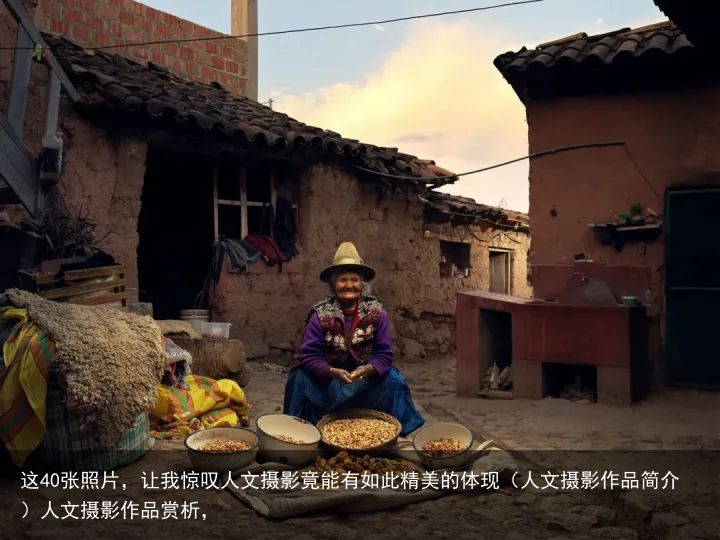
She helps her daughters in sorting corn grain for the artisanal chicha production.

Living and working in Arequipa area, Saturnino is a Minor in a Sillar quarry, a white stone used to build the Arequipa city since centuries.
Saturnino needs around an hour of work to be able to extract one perfect block from the quarry. Each stone is soled for 5 soles ( around 1€). During a good day he can carve more or less 12 stones. Nowadays Saturnino works more and more with tourists guide, explaining to tourists all the history behind this quarry, the Sillar stone and all the process of extraction of it.

Alejandro Flores, 66 ans is a reputed musician and weaver from Taquile Island . He learnt to work on the weaving loom with his parents. This cultural legacy continue at 4200m above the sea on the Titicaca Lake since generations.

Antonio Licona Tarco, 82 years old, first worked for many years in the construction industry. He then join his wife family bakery business. Back in the days, all the bakers of Oropesa village used to have all the oven in the same place, at the center of the village. Now every baker has his own oven in their own place where they make and sell the bread everyday. His oven can cook around 50 big bread at each round, a small fan fan the fire continuously but one of the big knowledge of the baker is to perfectly maintain the temperature inside the artisanal oven. Fun fact, a pipe of water goes through the oven to provide hot water to the whole house.
Every morning Antonio start to work at 3:00 am with his grand son. their breakfast meal is made of course of freshly baked bread and a quinoa mate. Antonio is quite sure that this breakfast is the main reason why he’s still in a such good shape at his age.

Paracas National Park

Quelqanka Community lives in the Peruvian Andes near Patacancha. They’re farmers and raise Lamas since ages.

Valentin Mamani Sinche is 68 years old. Hi and his son are from the Quelcanka community in the Peruvian Andes. He learn Shamanism with his uncle since he’s a little boy ; and he now pass over his knowledge to his son Eusebio Mamani Quispe ( 39yo)
In the Andean culture the shaman depends on the energies of the whole nature, fire, air, water are his strengths and knowledge. Each Peruvian culture got his own healer : Pacos lives in the mountains, Shamans on the coast, and the Caracas in the Jungle. Buch each of them are usually called Shamans. Offerings can be made to heal the spirit or the body, to protect houses and even to have better result in the farming, harvesting or fishing as for everything else that require help from the Inca Gods, Apu.

Nilda Luz Licona Ojeda & Fortunata Licona Ojeda, 36 and 57 years old are the two daughters of Antonio Licona Tarco, the Baker. They live and work in Oropesa, a village close to Cuzco where they sell the bread made by their father.

Alvaro is a painter from Nazca. His father taught him to pain when he was a young boy. Alvaro makes amazing paintings of the victorious rooster that won a cock fight. But his also works on gigantic paintings where endangered species uses shadows to explain to other animals why and how the human being put them to death.

Agripino Huamán Palomino was born in 1946 in Ayacucho, he started in goldsmithing at the age of 18 at the Ayacucho Crafts Center where he later taught himself, then at the School of Fine Arts. he won the first goldsmiths prize, then participated in all the competitions organized by the Silver Board of Peru. In 2013 he received the Joaquin Lopez Antay Prize of the Congress of the Republic. In 2015 he received the prize "President of the Republic" He always distinguished himself by the delicate work of his filigree creations representing traditional dancers, animals, chests etc. He made his own weaving loom silver wire.

Benjamin Pizarro is a sculptor in Ayacucho. He was born in the artisanal district of Belén. His Master was Mr. Silverstre Quispe Ochante. Benjamin works a stone similar to marble found in the provinces of Cangallo and Vilcashuamán, south of Ayacucho. His subjects are mainly related to Andean traditions and folklore, as well as various Catholic religious icons. In 1970, at the age of 14, his work was awarded with the first prize of Huamanga University. In 2012 the Ministry of Culture distinguishes him as a meritorious personality of Peruvian culture.

Norberto Codoni makes traditional costumes for local festivals in his workshop in Puno.

Alfonso Sulca, born in 1944 is a Master weaver. His father, Master Ambrosio Sulca taught him the art of weaving. At 75, Alfonso still practices his art. he works for temples, museums or private buyers. He has contributed to the development of a very particular style of Ayacucho from traditional weaving, through research work on natural dyes and the teaching and promotion of his art. He has won numerous awards such as Doctor Honoris Causa from Huamanga University.
Mamerto Sánchez Cárdenas was born in 1942 in the city of Quinua in the province of Ayacucho.As a master of ceramist, he taught his handicraft to all generations of young people in his city. His sharp knowledge in history, and myths of the area as well as a perfect knowledge of the different types of clays allow him to have a rich and incredible work. He has won innumerable awards for his work and is exhibited in several countries of the world. His most remarkable works are huge churches to be placed on the roofs of houses.
Máximo Límaco Soto was born in 1959 in the city of Quinua, his master was Mr. Mamerto Sánchez. At 12, he made his first ceramics, a clay pot for which his father congratulated him. He exhibited his work in various Latin American countries and took the opportunity to meet a large number of artisans. His workshop, in Quinua, has become over time a real giant museum of Andean ceramics. His main themes of work are churches, Christ and comic characters. Recently he focused his work on a more utilitarian objects for restaurants, cafes and hotels in the city of Ayacucho. One of his greatest awards was PROMPEX, the promotion of Perus exports.
Mauro Palomino comes from Chara, San Pablo. He has 3 girls and 1 boy who helps him and learns guitar making with him. in 1982, Mauro Palomino began to learn how to make guitars from his brother-in-law. Since then, several personalities have ordered his instruments such as Nivardo Carrillo, Fred Arredondo or Julian Huallpa. His son Yovani began learning guitar making with his father at the age of 15. In his free time with the cedar, mahogany or walnut rests used for guitars and chalangos, he makes small collectible toys. The recognizable rosettes of their guitars are made of fine marquetry; it takes them a whole day to make one. Nowadays it is Yovani who deals exclusively with rosettes, since his father gradually loses sight.
Jesusa Seqovia Torres, 46, is a hat maker in Maras. The hat is an important part of the Colonial Métis costume. They are made of knitted straw then sprayed with wood glue to be painted and left to dry in the sun. She then decorated it with ribbons, pearls and buttons that identify the origin of the wearer.
Félicitas Torres Toccas is 73 years old she makes an artisanal Chicha which is a fermented corn beer. It takes about two weeks of work to produce a good quality chicha from the beginning of sprouting to tasting.
Victor Olave Rupa is the son of Antonio Olave Palomino, a very famous imagineo ceramist from Peru. He works in the workshop of his late father, in Cuzco where he continues the exceptional family savoir-faire in the creation of Christian-inspired and pre-Hispanic works.
Marleny Callañaupa Q. is an alpaca weaver since she was 9 years old. She began to weave bracelets and belts before moving on to creating more complex and technical pieces such as ponchos, rugs and table runners. In this artisanal cooperative, everything is hand made, from mowing the Alpacas to the last line of weaving. The dyeing of wool is made on site from natural pigments only, cochineal, dried plants, stones and land…
Alejandro Flores, 66 years old recognized musician and weaver from Taquile.
Emilio makes leather bags in Arequipa.
Reyna Ortiz, 27, learned how to make traditional tiles with her uncle when she was 10 years old. She now teaches her 9-year-old son John Elvis. The village of Pinipampa is located few kilometers away from Cuzco, the local economy is maintained exclusively through the manufacture of tiles and clay bricks. All the roofs of Cuzco are covered with tiles coming from Pinipampa.
Assumption Signa Viuda inherit her husband’s stall, located inside a Parking lot. Assumption welcomes local customers who want to recycle their glass bottles. She works without a machine tool, entirely by hand, and transforms six bottles of beer into a set of six glasses, a bottle of wine in a candle holder, a magnum in a vase, etc. His precarious situation does not prevent her from having a smart and communicative smile, and a very spontaneous kindness.
Lucia Quispe lives in Huacachina, an oasis close to Ika. She works at the municipal library and also develops a remarkable work as an illustrator. His biggest inspiration: Matisse.
Olivia is a Multidisciplinary artist from Nazca In addition to perpetuating the mysterious art of Quipus ( pre-Hispanic registers whose real meanings are kept by a few rare shamans and which were almost eradicated by the Spanish). She painted and registered all the plants and flowers of the Nazca region. She compiled all her watercolors in a book. Her work help to classify an extended area of Nazca nature as Reserva Natural.
Teodosia Marca Willy, 67 years old is a weaver on the Taquile Island on Titicaca Lake.
Angel Eduardo Quispe Nina is 55 years old and works with her 26 year old son Miguel Angel Quispe Ccora in their Sicuani workshop. Both of them make Alpaca-skin stuffed toys, entirely made by hand.
Martha Tupayachi Tapia is 38 years old, since the age of 7 she works in the 4 saltpans owned by her family in Maras. She works there with her sister Bernardina Tuayachi Tapia.
Q’eswachaka Bridge is the last remaining Inca rope bridge. Crossing the Apurimac River, the resident of the region keep the ancient tradition and skills alive by renewing the bridge every year.
The reconstruction is a communal effort made in honor of their ancestors and the Pachamama.
The bridge is made on site with the local grass, weaved to form strings and ropes.
Tater Vera is a native of Cuzco. Tater specializes in traditional enamelled ceramics, which came to Peru in the 15th century with the Spanish.
In 1950 an earthquake raged in Cuzco, the vast majority of artisans lost their production and had to close their workshops. With the arrival of new plastic materials, ceramist activity was no longer viable. It was in 1990 that Tater Vera began to take an interest in this colonial ceramics, has first goal was to preserve this knowledge. His work has been recognized with numerous awards, including the prestigious UNESCO Award of Excellence for Craftsmanship in 2014.
David Loayza is a Luthier in Ayacucho, his guitars are played by some of the greatest guitarists in Peru. David, who was trained by Master Abraham Falcón among others, uses mahogany, Baltic pine, Oregon pine, rosewood, ebony and maple to make guitars, mandolins, lute charangos or bandurries .
Teodosia Hyatta Quispe 41 years old, is a weaver from Taquile, Island on the Titicaca Lake.
Born in the traditional city of Sarhua at 3h driving from Ayacucho, Marcial Berrocal Evanan produces Las Tablas de Sarhua. When a family had a new home, the artist of the village used to paint some key moment of their lives, specific stories about them on a big piece of wood that they would hand on a wall as decoration. After the violent time of the "Shining Path” the Sarhuinos started to work on shorter pieces so it could be easier to sell it in Lima. Few years ago, the Ministry of Culture of Peru recognized Las Tablas de Sarhua as a National Cultural Patrimony.
Julio Tueros is a Caballo de Paso breeder, he works in a large ascienda in the region of Ica. Not only he raise the horses, Julio also rides and produces a trio dancing with his horse and a dancer.
Workers in a Kiln.
Inka Espipeña Family • Hairless Peruvian dogs breeders.
Tobi is a ceramist specialized in Nazca Art where he lives and works. His father, almost centenarian peasants found a multitude of remains of the Nazca era by working his land. By dint of self-taught research his father ended up recovering the techniques of ancestral ceramics disappeared. Tobi then took over in his fathers workshop. He also regularly receives classes of students or people interested in ceramics and explain them the history and manufacturing stages of Nazca ceramics.
Lucia Roxana Ninatape Cacya is a costume designer, she manufactures Bordados de Yanque.
Her work is inspired by the two pre-Inca local of costume : Collaguas and Cabanas. She find inspiration in the ancient pattern to create her own motifs of flowers and animals of the Chivay valley.
Rocky fishes Scallops. He can use two different technics to do so. He either go freediving for few minutes or use a compressor in a small boat that pulse air in a pipe he holds in his mouth. This kind of fishing technic is quite dangerous and Rocky as well as other fisherman, works in a deeply isolated fishermen village at one end of the Paracas desert, at two hours driving from the first proper road.
Roman Jehanno用中画幅拍摄人文照片无疑是开启了一种非常值得推崇的人文摄影方式,或许有朋友会认为这是棚拍或摆拍,但是人文摄影的精髓不就是对人尊严、价值、命运的维护,对人类遗留下来的各种精神文化现象的高度珍视并铭刻么?Roman Jehanno在一个节目中谈到他崇拜的摄影师Walker Evans时提到:“有两年,Evans拍的美国农妇的照片一直停留在我的脑海里,就像启示录一样。当时他奉命去拍摄美国西部底层劳动人民并为其发声。你看到那些照片,马上可以看出摄影师和摄影对象之间的纽带,也可以看出Evans对摄影对象充满了同情和怜悯。假如你观察他照片中的农妇的眼神,就可以知道她的生活状态、她受的苦。这也是我在摄影中想抓取的东西”
“我曾经给一个妇女拍过一张照片,我问她拍得怎么样,她回答说:‘照片里面的我就像是一本敞开的书’,我觉得这是我收到的最好的赞美。我想,最好的人文摄影应该是能攫取人物在环境中的灵魂”
既然都是想记录下人类社会最珍贵的文化影像,那又何必拘泥于某一种形式呢?唯一让人内心忐忑的,可能是中画幅那硕大的机身与镜头,带着它们跋山涉水倒是对体能的一种极度考验。Hasselblad继X1D II之后推出了一套神器:907 X+CFV II 50C,907 X 是Hasselblad目前最轻薄的中画幅机身,机身重量仅有 206g,如果结合XCD镜头以及后背后,预期重量与X1D装配镜头后相差不多。
与 CFV II 50C 结合使用时,能组合出一款极致便携的摄影利器,而且还挺复古,据说可以直接接到周杰伦《说好不哭》的同款机器上。在最近一篇推文中曾见过有摄影师转接徕卡的各种镜头,甚有惊喜。
907 X+CFV II 50C 这样的造型才是人文旅行该有的方式
 支付宝扫一扫
支付宝扫一扫 微信扫一扫
微信扫一扫


